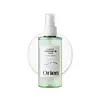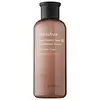What's inside
What's inside
 Key Ingredients
Key Ingredients

 Benefits
Benefits

 Concerns
Concerns

No concerns
 Ingredients Side-by-side
Ingredients Side-by-side

Water
Skin ConditioningPropanediol
SolventAlcohol
Antimicrobial1,2-Hexanediol
Skin ConditioningSilica
AbrasivePPG-13-Decyltetradeceth-24
EmulsifyingLithium Magnesium Sodium Silicate
AbsorbentSodium Citrate
BufferingCitric Acid
BufferingGlyceryl Caprylate
EmollientParfum
MaskingCalcium Chloride
AstringentEthylhexylglycerin
Skin ConditioningDisodium EDTA
Colloidal Sulfur
AntimicrobialVolcanic Ash
AbrasiveCI 77891
Cosmetic ColorantLactic Acid/Glycolic Acid Copolymer
Skin ConditioningAluminum Hydroxide
EmollientTriethoxycaprylylsilane
Tocopherol
AntioxidantWater, Propanediol, Alcohol, 1,2-Hexanediol, Silica, PPG-13-Decyltetradeceth-24, Lithium Magnesium Sodium Silicate, Sodium Citrate, Citric Acid, Glyceryl Caprylate, Parfum, Calcium Chloride, Ethylhexylglycerin, Disodium EDTA, Colloidal Sulfur, Volcanic Ash, CI 77891, Lactic Acid/Glycolic Acid Copolymer, Aluminum Hydroxide, Triethoxycaprylylsilane, Tocopherol
Ingredients Explained
These ingredients are found in both products.
Ingredients higher up in an ingredient list are typically present in a larger amount.
1,2-Hexanediol is a synthetic liquid and another multi-functional powerhouse.
It is a:
- Humectant, drawing moisture into the skin
- Emollient, helping to soften skin
- Solvent, dispersing and stabilizing formulas
- Preservative booster, enhancing the antimicrobial activity of other preservatives
Citric Acid is an alpha hydroxy acid (AHA) naturally found in citrus fruits like oranges, lemons, and limes.
Like other AHAs, citric acid can exfoliate skin by breaking down the bonds that hold dead skin cells together. This helps reveal smoother and brighter skin underneath.
However, this exfoliating effect only happens at high concentrations (20%) which can be hard to find in cosmetic products.
Due to this, citric acid is usually included in small amounts as a pH adjuster. This helps keep products slightly more acidic and compatible with skin's natural pH.
In skincare formulas, citric acid can:
While it can provide some skin benefits, research shows lactic acid and glycolic acid are generally more effective and less irritating exfoliants.
Most citric acid used in skincare today is made by fermenting sugars (usually from molasses). This synthetic version is identical to the natural citrus form but easier to stabilize and use in formulations.
Read more about some other popular AHA's here:
Learn more about Citric AcidEthylhexylglycerin (we can't pronounce this either) is commonly used as a preservative and skin softener. It is derived from glyceryl.
You might see Ethylhexylglycerin often paired with other preservatives such as phenoxyethanol. Ethylhexylglycerin has been found to increase the effectiveness of these other preservatives.
Propanediol is an all-star ingredient. It softens, hydrates, and smooths the skin.
It’s often used to:
Propanediol is not likely to cause sensitivity and considered safe to use. It is derived from corn or petroleum with a clear color and no scent.
Learn more about PropanediolWater. It's the most common cosmetic ingredient of all. You'll usually see it at the top of ingredient lists, meaning that it makes up the largest part of the product.
So why is it so popular? Water most often acts as a solvent - this means that it helps dissolve other ingredients into the formulation.
You'll also recognize water as that liquid we all need to stay alive. If you see this, drink a glass of water. Stay hydrated!
Learn more about Water